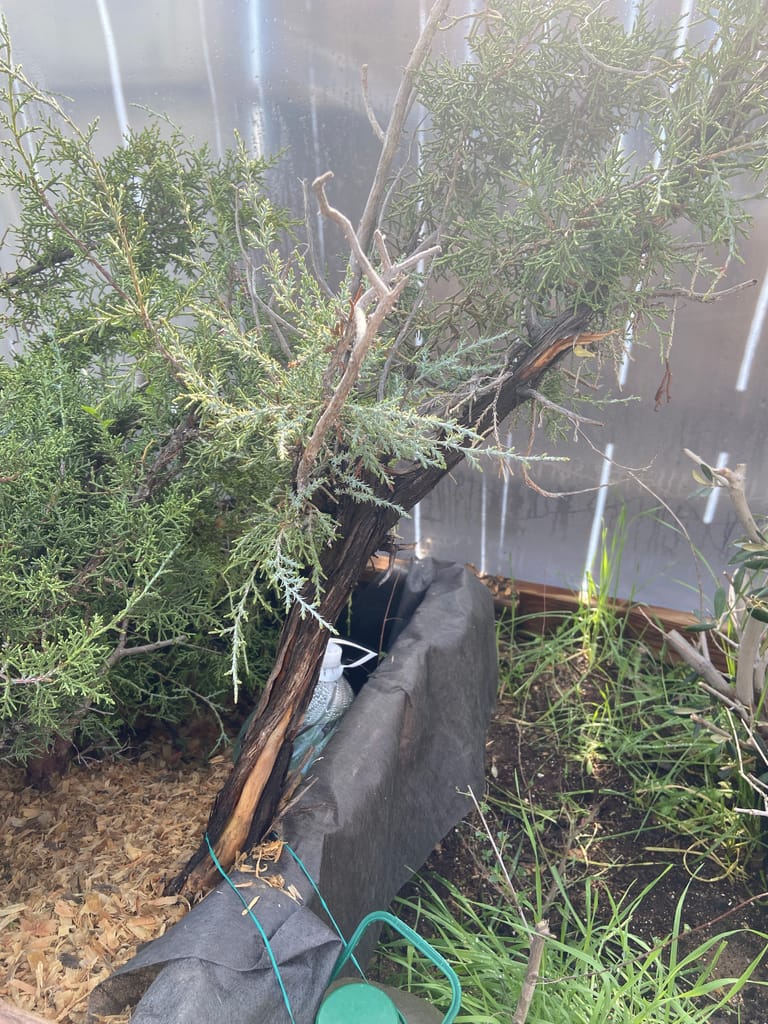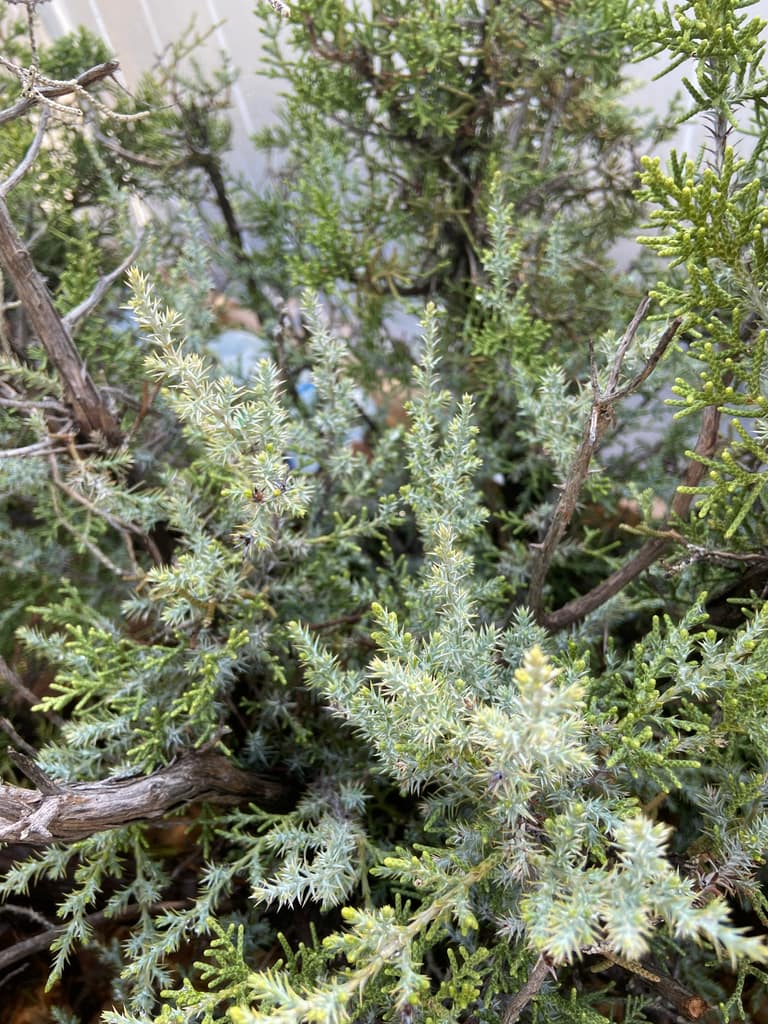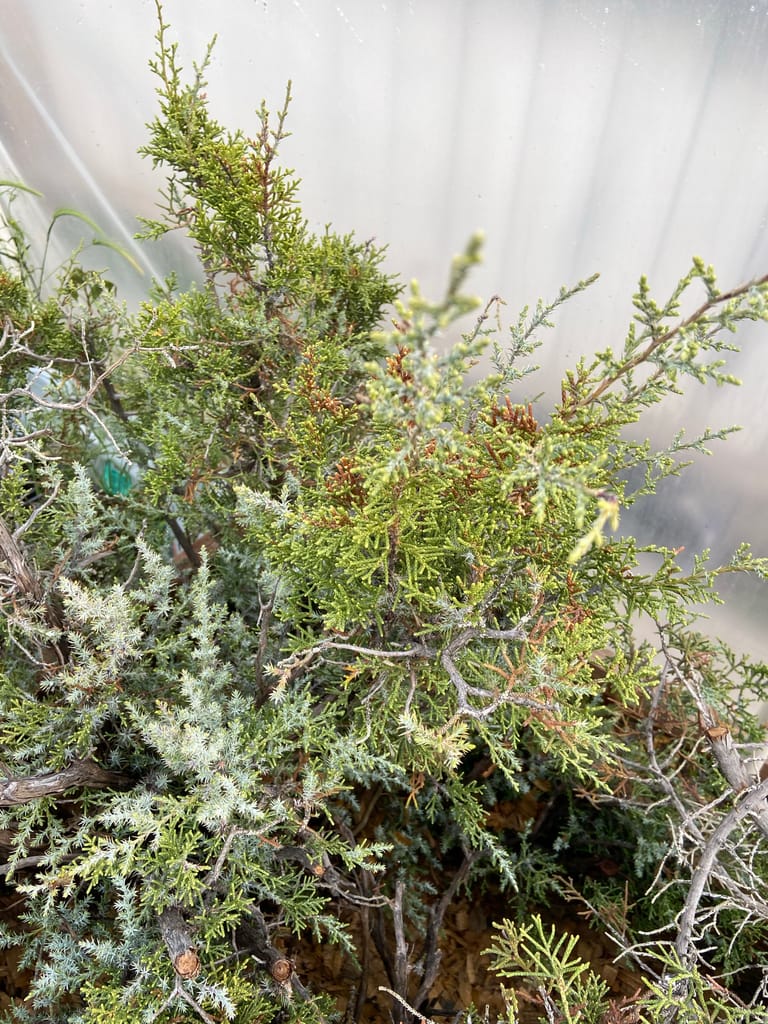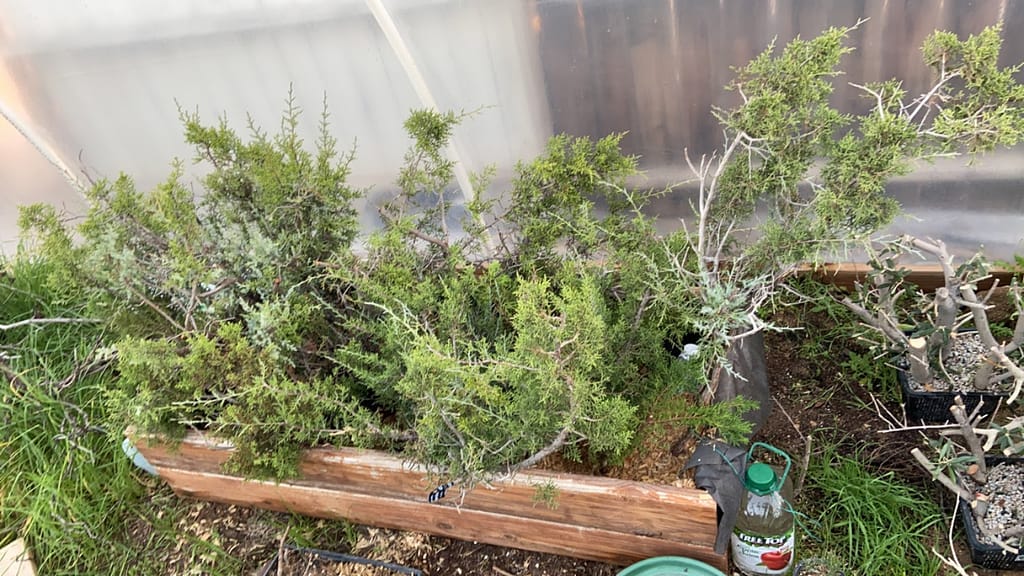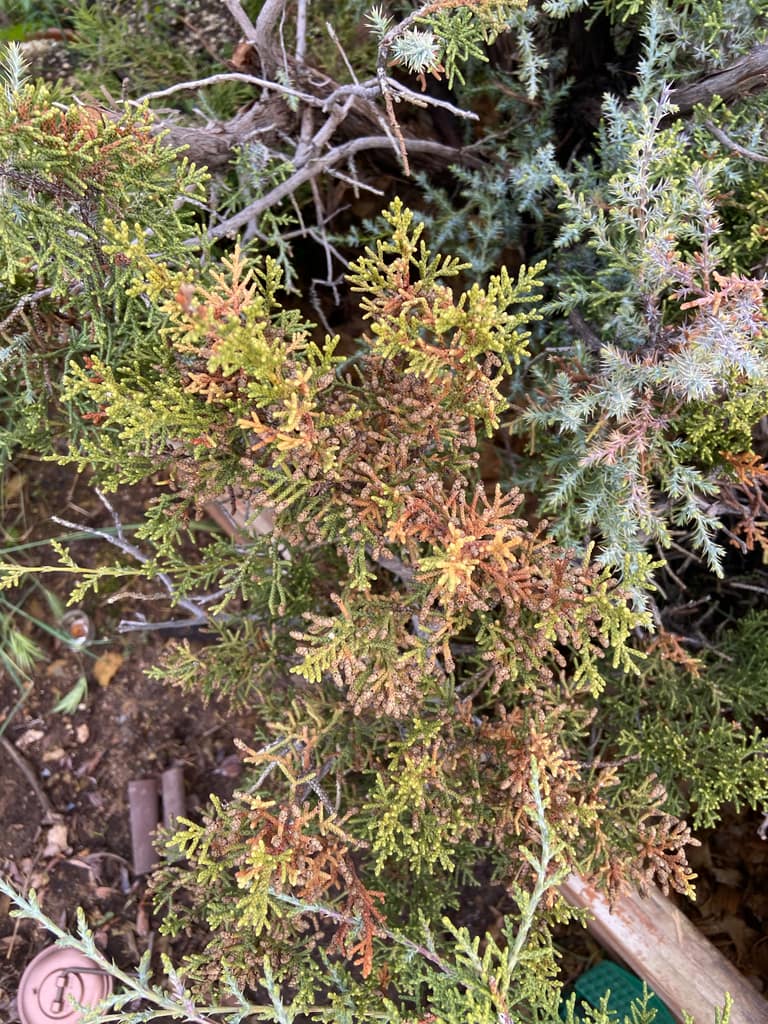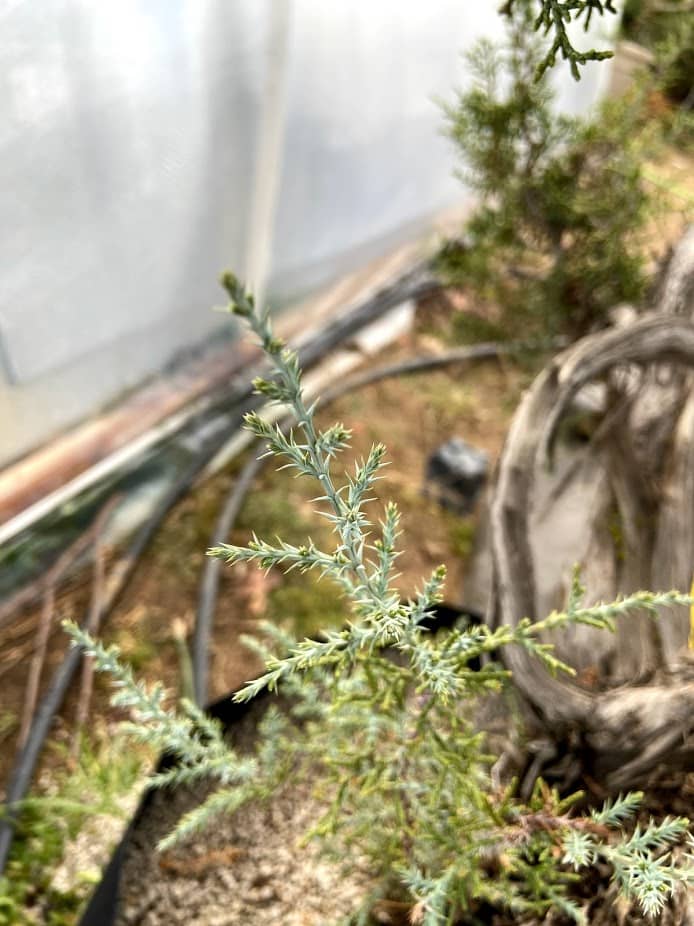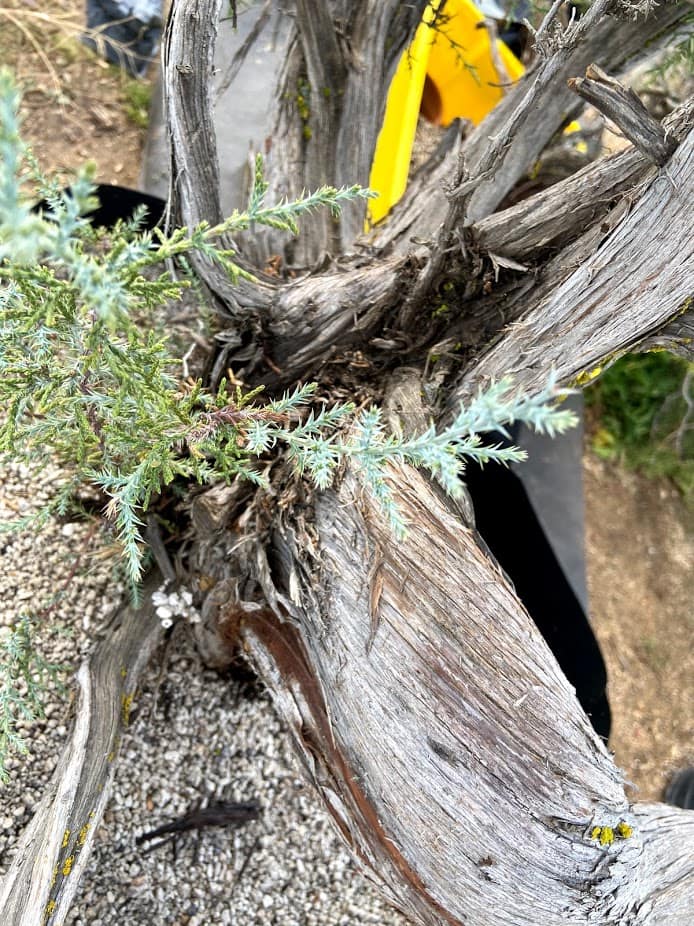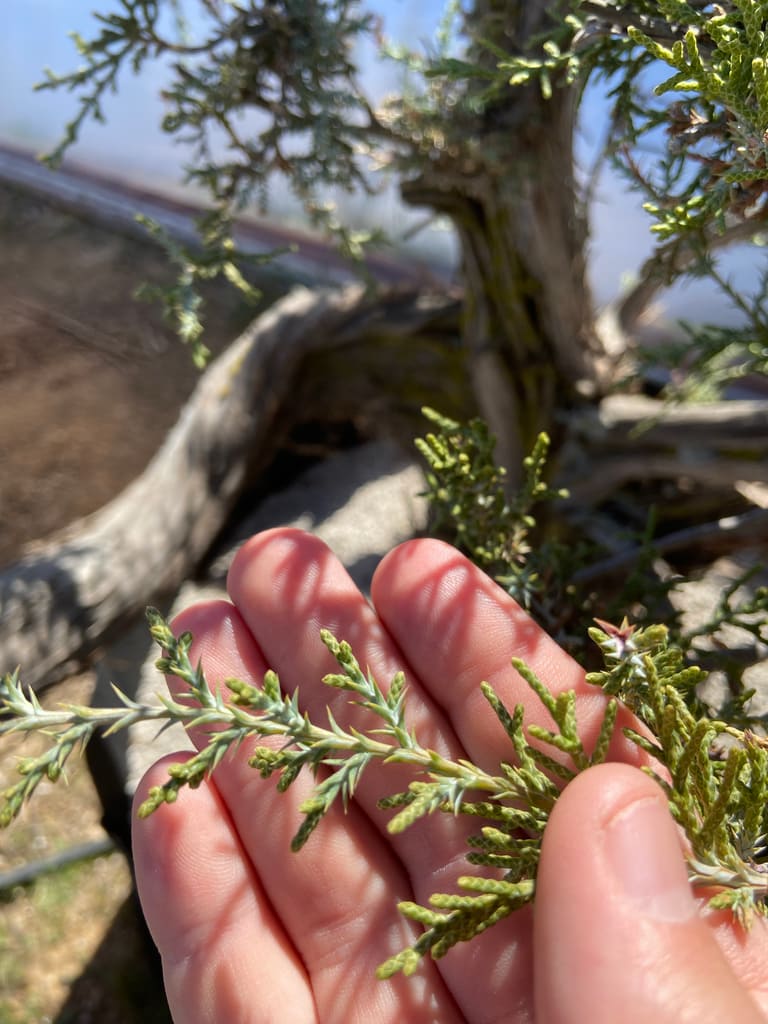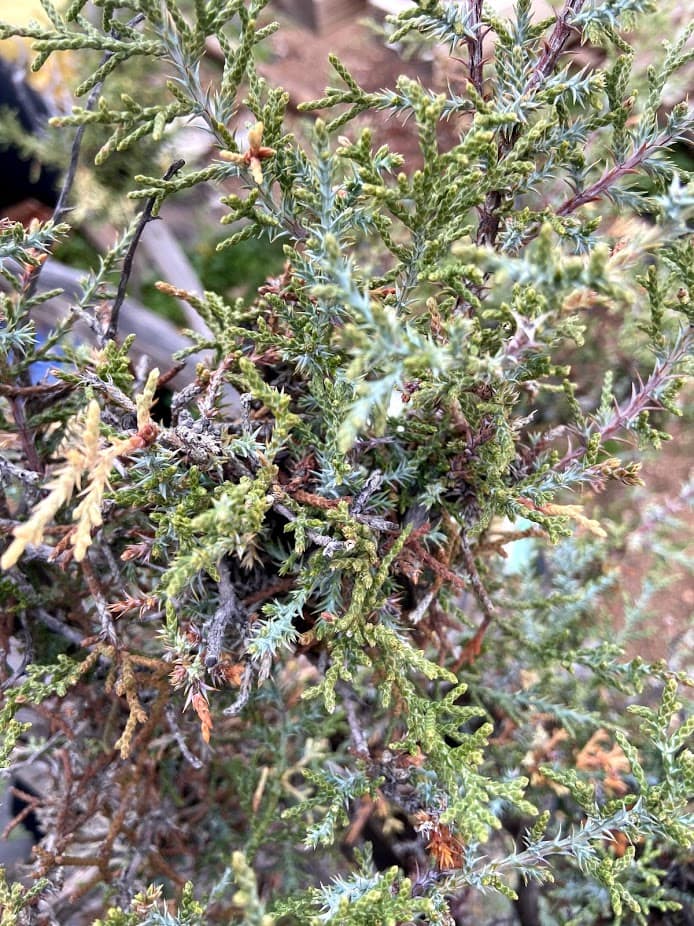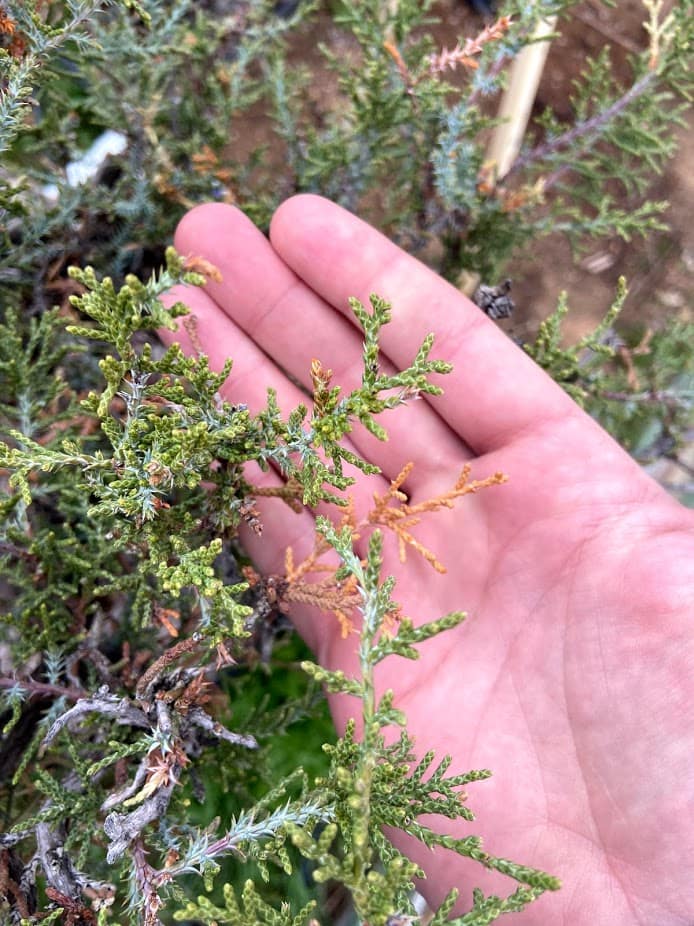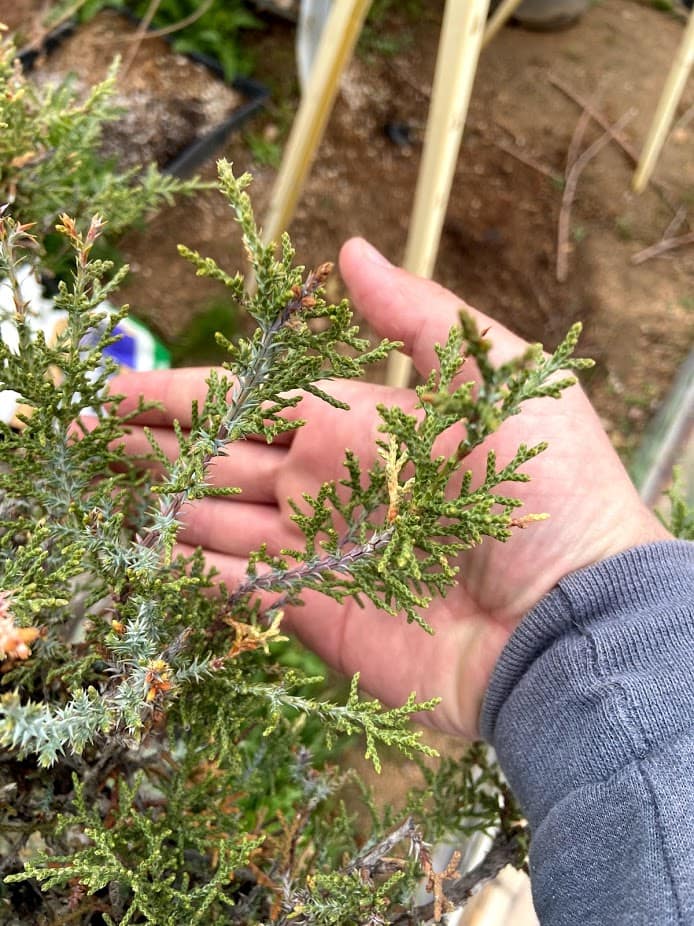California Junipers are hard to collect. Unless you find one on top of a rock pocket in the mountains, you’d better be in the right season, with the right amount of rain recently, and know how to dig the root ball. If not, you’ll be greeted by hard dirt that breaks apart with ease, no surface roots to hold the root ball or survive with, and a dead tree.
People that successfully collect a California Juniper can go through a few stages of emotional rollercoastering that I want to mention.
- Stage 1: Terror when realizing that their tree can stay green and appear alive for up to 6 months while it is actually dead.
- Stage 2: Becoming happy to see new growth starting to grow with green tips and juvenile needles becoming mature foliage.
- Stage 3: Panic when the trees decide which foliage to keep and start to shed others.
- Stage 4: Glee when they realize that is a good sign.
I want to give a photo comparison of parts of my trees that can demonstrate the stages that California Junipers go through once collected. The first two photos are of the California Junipers that I collected that I considered “danger” trees. These trees came out with less than ideal root balls or were bare rooted along the process of collection and potting.
The two on the left (out of 5, hard to distinguish I know) were collected earlier on Dec 9th, and the ones on the right were collected Jan 4th. Here is the lot together with photos taken on Jan 26th and Feb 16th. Notice how they don’t really look any different (it’s the lighting)
Between the 3rd and 4th month is when things can start to happen. Needles will brown and die. To decipher whether or not the tree is dying you look to make sure it isn’t systematic. Follow one branch and see if all needles on that branch are browning. If you find portions that are green and you have browning needles below that and not all of them are brown then you’re probably in a good spot. Below in the March 31st photos you can see that there is a little bit of green everywhere with brown accompanying it. Keep in mind that this was a bare rooted California Juniper and not all of them will have this much browning.
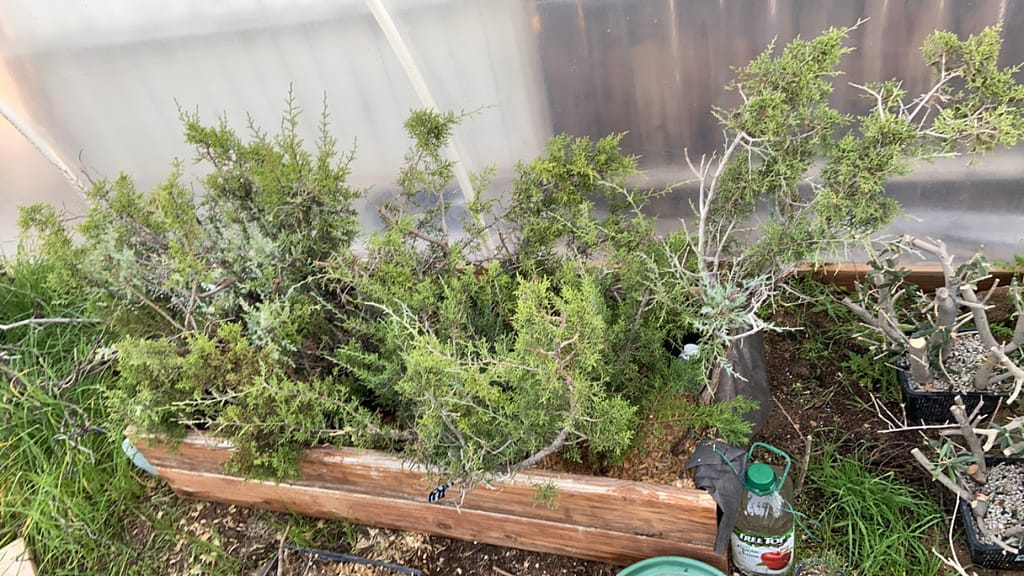
January 26th 2020 – Photo Taken 
Feb 16th 2020 – Photo Taken 
Feb 16th 2020 – Photo Taken Apr 21st 2020 – Photo Taken 
Mar 31st 2020 – Photo Taken 
Mar 31st 2020 – Photo Taken
As the gallery above demonstrated, the tree below followed suit by shedding a large amount of needles in the photo area. This one has plenty of growth elsewhere that leads me to not worry about its overall health and chance at survival. It also went in with a semblance of a rootball.
On this last one you’re able to see how the juvenile foliage has grown into mature foliage. This tree shed significantly less foliage as it had previously been trenched and cut back. The foliage it did shed was surely due to a lack of photosynthetic ability from shading of other branches.

Jan 7th 2020 – Photo Taken 
Jan 7th 2020 – Photo Taken 
Feb 16th 2020 – Photo Taken 
Mar 12th 2020 – Photo Taken 
Mar 12th 2020 – Photo Taken 
Mar 12th 2020 – Photo Taken
So when your California Juniper starts to turn a little brown in a few places, no need to freak out, just make sure it isn’t all of it.

